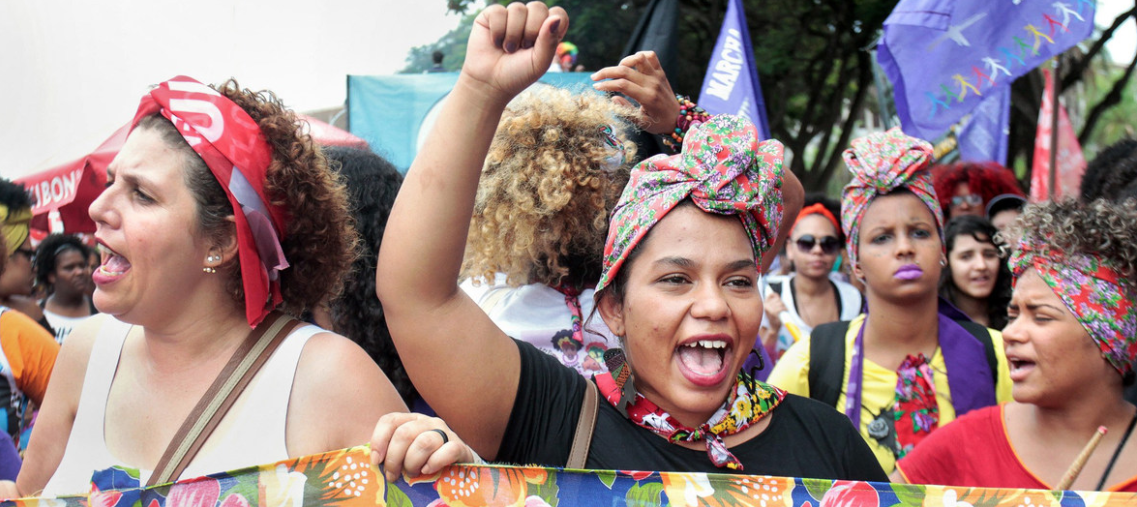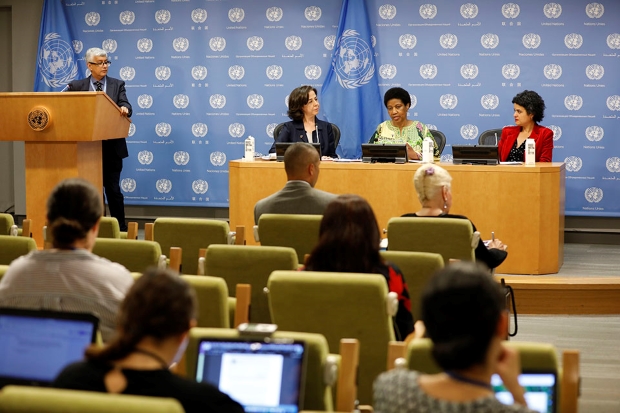This past Tuesday, UN Women released a new Report: “Progress of the World’s Women 2019-2020: Families in a Changing World,” which evaluated the breadth of transformations that have occurred within family dynamics and the implications this has for the fight for gender equality. As the Report puts it, “families can be places of care, but can also bring conflict, inequality, and far too often, violence.”
One of trends mentioned in the report is that globally, the age of marriage has increased as birth rates have declined. Same-sex families were also reported as being “increasingly visible in all regions.” Another trend that we see is that a little over one third of households are couples living with children, and almost another one third are extended families. The Report also indicated that the majority of lone-parent families (8 per cent) are led by women, who are “juggling paid work, child-rearing and unpaid domestic work.”

Speaking of unpaid domestic report, the Report indicates that, “Women continue to do three times as much unpaid care and domestic work as men in the absence of affordable care services.” As for paid work, “Globally, just over half of married women aged 25-54 are in the labour force, compared to two-thirds of single women, and 96 percent of married men.” Furthermore, the Report reveals that women who are mothers in high-income countries, “bear a significant penalty in terms of wages, while for most men, fatherhood results in a wage ‘bonus.’” Research shows that it is women worldwide, who provide “institutional long-term care (LTC) for older persons and those living with disabilities.”
Across the world, girls and women still lack the choice of “who and when to marry,” according to Phumzile Mlambo-Ngcuka, Under-Secretary-General and UN Women Executive Director. As stated in the Report, “Two-thirds of countries around the world allow girls to be married before 18 with parental or judicial consent.” When it comes to equal rights within a marriage, “out of 189 countries, 19 explicitly require women to obey their husbands, [and] in 17 countries, married women are not allowed to travel outside the home in the same way as married men.” Furthermore, “in 37 countries married women are not allowed to apply for a passport in the same way as married men.” In addition, “women and men do not have equal rights to inherit assets from their spouse” in 37 out of 183 countries.

Despite much progress on the implementation of laws that protect women from violence, according to the Report, “thirty per cent of women worldwide who have ever been in a relationship have experienced physical and/or sexual violence from an intimate partner over their lifetime.” The Report states that “In 2017, more than half all of female victims of intentional homicide were killed by a family member, and more than one third of these were killed by their current or former intimate partner.” Additionally, “Around 2017, one in three girls aged 15 to 19 had been subjected to FGM [Female Genital Mutilation] in the 30 countries where the practice in concentrated.”
Even more alarming is that there are still countries worldwide that allow men to get away with rape depending on whether marriage is in the picture or not. The Report states that, “Today, three billion women and girls live in countries where rape within a marriage is not explicitly criminalized.” Furthermore, there are countries that have laws embedded into their penal code to protect rapists and allow them to escape prosecution if they marry or intend to marry their victim. For example, according to one UN Women article, “In the space of a month [August 2017], the Governments of Tunisia, then Jordan and finally Lebanon, repealed or reformed clauses in their penal codes that enabled perpetrators to evade prosecution if they married the woman they had attacked and allowed families to force women into marriage with their rapists to prevent the social stigma of pre-marital sex.” Unfortunately, the Report states, “By 2018, 12 out of 185 countries and territories [still] retained [such] clauses in [their] legislation.
Today, abortion is more controversial than ever and is being used as a political tool to garner support in elections. Therefore, paying attention to statistics, like the ones outlined in this Report, is fundamental to understanding the severity of potential outcomes when a woman’s right to choose is denied. According to the Report, “Of the estimated 55.7 million abortions that occurred worldwide each year between 2010 and 2014, just under half were unsafe, of which 97 per cent were in developing countries.” Furthermore, “Unsafe abortion-related deaths are estimated to account for between 8 and 11 per cent of all maternal deaths worldwide.” Yet, in an effort to overturn Roe v Wade – a US Supreme court ruling recognizing a woman’s constitutional right to abortion – many conservative states are currently enacting laws restricting access or outright banning abortions.

Progress of the World’s Women 2019-2020 offers a plethora of recommendations on how to resolve the numerous issues addressed in the Report. These include: reforming laws so women can choose the circumstances of their marriage and divorce; recognizing that partnerships are diverse; enabling women to make better life choices by investing in public services, such as education; providing parental leave and State care for the elderly and the young; and reforming and implementing new laws to protect women from violence.
It has been insinuated that suggestions can amount to just that – suggestions – but an analysis produced by the report found that “most countries could implement a package of policies, including income support throughout the life course, healthcare, and care services for children and older persons for less than 5 per cent of GDP.”
Achieving gender equality is necessary for achieving the UN’s Sustainable Development Goals for 2030. . Gender equality is not just a goal in and of itself. It overlaps with education, poverty, health, economic growth, and so on and so forth. The progress made in fighting for women’s rights has been substantial, and with such a detailed report as this one – almost 300 pages – there is no reason not to believe that its implementation can result in even progress across the world.












